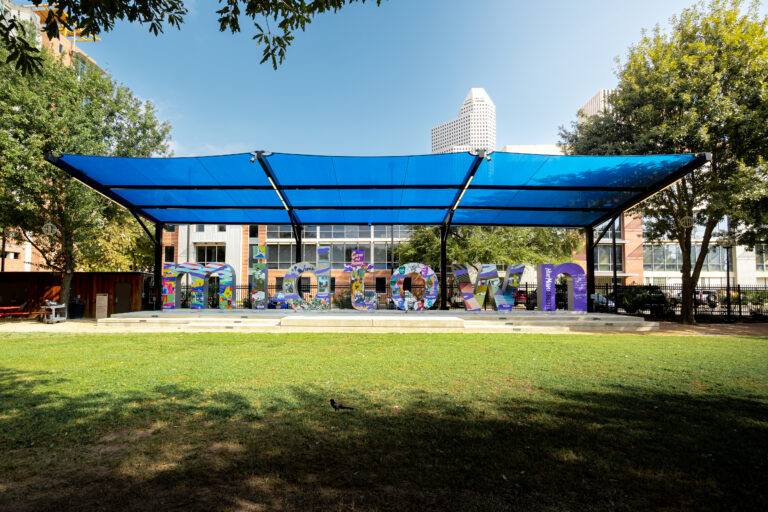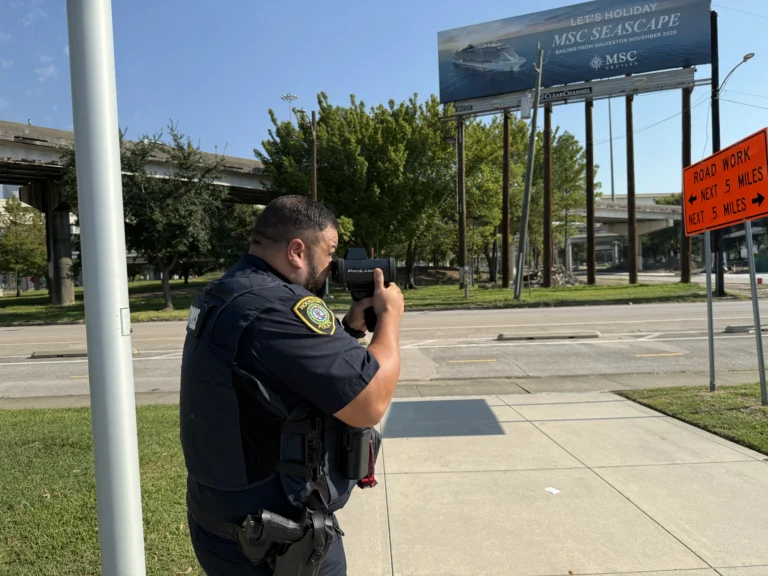Houston continues to be lauded as one of the most diverse cities in the country. As such, we proudly celebrate the rich, diverse cultures that make our city so special year-round. This month and next, we’re spotlighting Houstonians of Latin descent for National Hispanic Heritage Month.
In honoring this month, we want to start by taking a look at the events that shaped this important celebration of culture and history:
- The observation started in 1968 as Hispanic Heritage Week under President Lyndon Johnson
- President Ronald Reagan expanded it in 1988 to cover 30 days starting on September 15 and ending on October 15
- It was enacted into law on August 17, 1988, on the approval of Public Law 100-402
- The day of September 15 is significant because it is the anniversary of independence for Latin American countries Costa Rica, El Salvador, Guatemala, Honduras and Nicaragua
- Mexico and Chile celebrate their independence days on September 16 and September 18, respectively
In Midtown, we’re recognizing the contributions of Hispanic pioneers who made their mark in Houston. Local artist Lizbeth Ortiz was selected to design an art installation for the iconic Midtown letters at Bagby Park, uplifting those who paved the way for today’s generation of activists, entrepreneurs, and heroic figures. Born in Mexico City, raised in Houston and a graduate of both HSPVA and the prestigious Pratt Institute, Ortiz’s artwork pays homage to six prominent Hispanic leaders who made a difference in Houston. She created a visual Day of the Dead altar with each letter representing one of the historical figures surrounded by the tools they used to make a difference in the Houston community. The traditional elements used in altars, such as flowers, papel, picado, candles, and food, are present in each letter. The center letter “T” serves as the anchor to the altar and is represented by the Virgen de Guadalupe. The Virgen is a Mexican belief rooted in Spain. She is venerated throughout Latin America.
Lizbeth believes this design will not only add color and flavor to the Hispanic Heritage festivities at Bagby Park but will also highlight our city’s history and the contributions of the Latino community.
The artwork honors:
- Macario Ramirez (1934- 2020): Born in San Antonio, a champion of the Chicano cause in Houston and owner of Casa Ramirez. A graduate of St. Mary’s University, a little-known fact is that Ramirez was a civilian advisor with the Department of Defense, setting up language programs in south Vietnam, Honduras, Guatemala, and El Salvador. The Folkart Gallery, which is still an important gathering place, was owned and operated by the late Ramirez and his wife Chrissie Dickerson Ramirez. Casa Ramirez promotes and celebrates the rich and vibrant Latino culture, especially that of Mexico, Texas, and the Southwest, through related exhibits and shows on Latino cultural traditions and the sale of its art, folk art, and crafts. The store was opened in the 1980s as an homage to Ramirez’s late father, a laborer and jeweler who sold items from a coffee table he would set up on the streets of San Antonio.
- Maria Jiménez (1950-2020): Born in Mexico, she came to the U.S as a child and grew up in the Magnolia neighborhood of Houston. She was an influential immigration and civil rights activist. Over the last 30 years, she had been a watchdog of human rights abuses at the U.S.- Mexico border. In 2013, she co-founded the South Texas Human Rights Center to address the deaths of migrants — and their lack of proper burials. She worked with laborers and Mayan communities in Central Mexico. She helped people get visas through the Association for Residency and Citizenship of America. She advocated for Central American workers in Houston through the Service Employees International Union.
- Leonel J. Castillo (1939–2013): Born in Victoria, TX, he grew up in Galveston. After completing a master’s degree at the University of Pittsburg, he and his family moved to Houston. Here he became an activist, community leader, and the first Mexican American elected to citywide office in Houston. President Jimmy Carter nominated Castillo as Commissioner of Immigration for the United States Citizenship and Immigration Services, making him the first Hispanic to hold that role and the first Hispanic appointed to President Carter’s administration. The building depicted is the Leonel J. Castillo Community Center, located at 2101 South Street.
- Virgen de Guadalupe is in reference to the sightings of her by Juan Diego in 1531. He was granted four apparitions of the Virgin. Juan Diego was beatified in 1990 and canonized in 2002. He is the first indigenous saint of the Americas.
- Lydia Mendoza (1916-2007): A native Houstonian, guitarist, and singer of Tejano and traditional Mexican American music, Mendoza is revered as The Mother of Tejano Music. This art form which is influenced by Mexican, Spanish, German, and Czech musical roots, is indigenous to Texas. Mendoza earned many honors and performed throughout all the Americas in her long career. In 1971, she performed at the Smithsonian Festival of American Folklife in Montreal, Canada; in 1975; she performed for President Jimmy Carter at the John F. Kennedy Center in Washington. She was inducted into the Tejano Music Hall of Fame in 1984 and into the Conjunto Music Hall of Fame in 1991. She received a National Medal of Arts and was awarded the Texas Medal of Arts of the Texas Cultural Trust. She even has her own U.S. Postal Stamp released in 2013.
- Staff Sergeant Macario García (1920-1972): Born in Mexico, he moved to Texas and ultimately settled in Sugarland at the age of 3. The first Mexican immigrant to receive the Medal of Honor, the United States’ highest military decoration. He received the award for his heroic actions as a soldier during World War II. He also received a Purple Heart, a Bronze Star, and the Combat Infantryman’s Badge. Garcia returned to the Houston area and was active in the community as an advocate for civil rights. He gained his U.S. citizenship in 1947 and his high school diploma in 1951. In the later years of his life, Garcia worked as a counselor at the Veteran’s Administration offices in Houston.
- Ninfa Laurenzo (1924-2001): Born in Harlingen TX. In 1949 she and her husband Dominic moved to Houston based on the flip of a coin. They opened the Rio Grande Tortilla Factory in the East End. In 1969 after the untimely death of Dominic she opened a small restaurant in front of the tortilla factory to keep money coming in to support her family. The first lady of Mexican cooking, she was the founder of Ninfa’s, a restaurant inextricably linked to the Houston food scene. A beloved restaurateur, innovator, community leader, and mentor, “Mama Ninfa” received numerous awards and recognitions for her business success and her volunteer work. In 1979 the National Hispanic Chamber of Commerce named her “Business Woman of the Year,” and the Texas Restaurant Association honored her as “Woman Restaurateur of the Year.” She also received the Arthritis Foundation’s Humanitarian Award and the Roundtable for Women in Foodservice’s Pacesetter Award.
Visit Bagby Park, located at 415 Gray St, Houston, TX 77002, to see the art installation.





